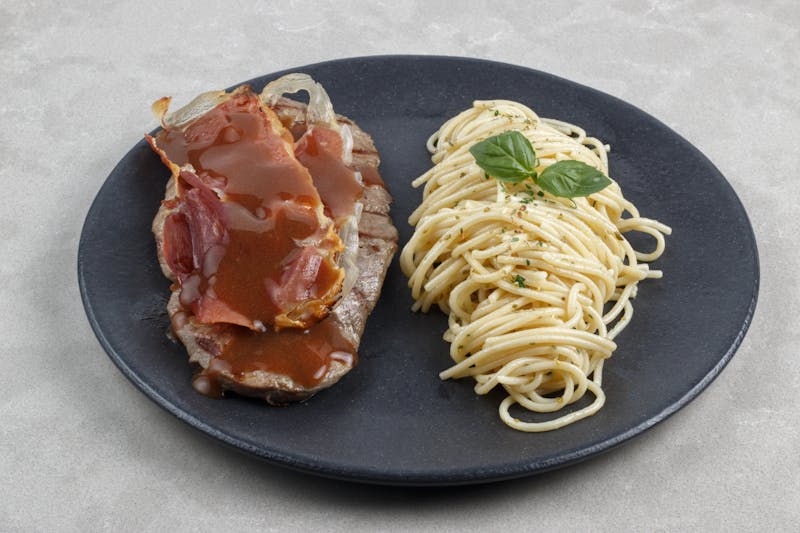Introduction
The low-carb lifestyle has gained significant popularity over the past decade, and for good reason. Whether you’re looking to lose weight, improve your energy levels, or enhance your mental clarity, cutting back on carbohydrates can offer a wide range of benefits. But, as with any major dietary shift, the key to success lies in simplicity and consistency. In this article, we’ll break down the basics of a low-carb lifestyle, provide you with practical tips, and offer easy-to-follow recipes that will help you thrive on a low-carb diet.
What is a Low-Carb Lifestyle?
Before diving into the tips and recipes, it’s important to understand what the low-carb lifestyle entails.
Defining Low-Carb
In simple terms, a low-carb diet involves reducing your intake of foods that are high in carbohydrates, particularly refined carbs and sugars. This typically means cutting back on bread, pasta, rice, and sugary snacks, while focusing more on proteins, healthy fats, and vegetables. Depending on your specific goals, the amount of carbs you consume may vary, but most low-carb diets aim to reduce carb intake to around 20-50 grams per day.
How It Works: A Quick Overview
When you drastically reduce carbs, your body enters a state known as ketosis, where it burns fat for energy instead of glucose (which comes from carbs). This can lead to rapid weight loss, increased fat burning, and improved insulin sensitivity. The key to maintaining this state is keeping your carb intake low enough that your body continues to burn fat as its primary fuel source.
Benefits of a Low-Carb Diet
A low-carb diet offers a multitude of benefits, not only in terms of weight loss but also in overall health improvement.
Weight Loss and Fat Burning
One of the most immediate and noticeable benefits of a low-carb diet is weight loss. By cutting out sugary foods and refined carbs, you’re likely to reduce your overall caloric intake and make it easier for your body to burn fat. Additionally, by increasing your intake of healthy fats and proteins, you’ll feel fuller for longer, helping you resist overeating.
Improved Blood Sugar Control
Reducing carbs can help stabilize your blood sugar levels, especially for individuals with insulin resistance or type 2 diabetes. By lowering the number of carbs you consume, you’re giving your body a chance to regulate insulin more effectively, which can lead to better long-term health outcomes.
Enhanced Mental Clarity and Energy
Many people report feeling more mentally clear and energetic on a low-carb diet. By cutting out sugar, which can cause energy spikes and crashes, you’ll experience more consistent energy throughout the day. Your body also begins to use fat as a fuel source, which can provide sustained energy without the need for constant carb consumption.
How to Start a Low-Carb Lifestyle
Transitioning to a low-carb lifestyle may seem daunting at first, but with the right approach, it can be seamless and enjoyable.
Setting Realistic Goals
It’s important to set realistic and achievable goals when starting a low-carb diet. Begin by reducing your carb intake gradually rather than making drastic changes overnight. This will give your body time to adjust, and you’ll be less likely to experience cravings or setbacks.
Choosing Low-Carb Foods
The key to success on a low-carb diet is to fill your plate with whole, nutrient-dense foods. Focus on protein-rich foods like chicken, fish, eggs, and tofu. Healthy fats like avocado, olive oil, and nuts are also excellent choices. Non-starchy vegetables such as leafy greens, cauliflower, and zucchini should be the foundation of your meals.
Avoiding Common Pitfalls
It’s easy to get caught up in “low-carb” processed foods, which can often be high in unhealthy fats and artificial sweeteners. Stick to whole, unprocessed foods as much as possible.
Hidden Carbs in Everyday Foods
Be mindful of hidden carbs in foods like sauces, dressings, and even some vegetables. Many packaged foods may contain sugar or flour-based fillers that can add up quickly. Always check labels carefully and opt for homemade or minimally processed versions when possible.
Staying Consistent in Social Situations
Social events and dining out can present challenges when following a low-carb diet. However, with a little preparation, you can stay on track. Look up restaurant menus ahead of time and ask for modifications, like swapping fries for a side salad or grilled veggies. If you’re attending a party, bring a low-carb dish to share so you have something to eat.
Simple Low-Carb Tips for Success
Here are some practical, easy-to-implement tips that will help you thrive on your low-carb journey.
Plan Your Meals Ahead
Meal planning is key to staying on track. Take some time each week to plan your meals, prep ingredients, and organize your shopping list. This will reduce the likelihood of reaching for high-carb options when hunger strikes.
Focus on Whole, Unprocessed Foods
Opt for whole foods as much as possible. Fresh meats, vegetables, and healthy fats should make up the majority of your meals. Avoid packaged low-carb foods that often contain hidden sugars and unhealthy fats.
Snack Smart with Low-Carb Options
When you need a snack, reach for low-carb options like nuts, cheese, boiled eggs, or vegetables with hummus. These snacks are satisfying and won’t kick you out of ketosis.
Low-Carb Recipes to Try Today
Now that you have the basics of a low-carb lifestyle, here are three simple and delicious recipes to get you started.
1. Zucchini Noodles with Pesto and Grilled Chicken
Why You’ll Love It
Zucchini noodles (or “zoodles”) are a fantastic low-carb substitute for pasta. Paired with a flavorful pesto sauce and grilled chicken, this dish is fresh, satisfying, and full of flavor.
Recipe Instructions
Ingredients:
- 2 zucchinis, spiralized
- 1 grilled chicken breast, sliced
- 1/4 cup pesto sauce (homemade or store-bought)
- 1 tbsp olive oil
Instructions:
- Sauté the zucchini noodles in olive oil for 2-3 minutes until tender.
- Toss the zoodles with pesto sauce.
- Top with grilled chicken and serve.
2. Cauliflower Rice Stir-Fry
Why You’ll Love It
Cauliflower rice is a low-carb alternative to traditional rice and works perfectly in stir-fry dishes. This recipe is quick, easy, and packed with flavor.
Recipe Instructions
Ingredients:
- 1 head of cauliflower, grated into rice-sized pieces
- 1 tbsp olive oil
- 1/2 cup diced bell peppers
- 1/4 cup diced onions
- 1 tbsp soy sauce (or tamari for gluten-free)
Instructions:
- Heat olive oil in a pan over medium heat.
- Add bell peppers and onions and sauté until tender.
- Add the cauliflower rice and soy sauce. Stir-fry for 5-7 minutes until the cauliflower is tender and slightly crispy.
3. Keto Avocado Salad with Shrimp
Why You’ll Love It
This salad combines healthy fats from avocado with protein from shrimp, making it a filling and refreshing low-carb meal.
Recipe Instructions
Ingredients:
- 1 ripe avocado, diced
- 1 cup cooked shrimp
- 1/4 cup cherry tomatoes, halved
- 1 tbsp olive oil
- 1 tbsp lemon juice
Instructions:
- Toss the avocado, shrimp, and tomatoes in a bowl.
- Drizzle with olive oil and lemon juice.
- Season with salt and pepper, and serve immediately.
Staying Motivated on Your Low-Carb Journey
Maintaining consistency on your low-carb diet can be challenging at times. Here are some tips to keep you motivated.
Track Your Progress
Track your meals and progress using apps or a food journal. Seeing your improvements can keep you motivated and help you stay on track.
Celebrate Your Successes
Celebrate small victories along the way. Whether it’s fitting into a smaller pair of jeans or simply making it through a tough week, acknowledging your achievements will keep you motivated.
Find Support from a Community
Joining a low-carb community, whether online or in-person, can provide valuable support and encouragement. Share recipes, ask questions, and lean on others when you need it.
Conclusion
The low-carb lifestyle doesn’t have to be complicated or restrictive. By following these simple tips, focusing on whole foods, and staying consistent, you’ll be able to enjoy the many benefits of a low-carb diet. Whether you’re aiming for weight loss, better energy, or improved health, this lifestyle can offer lasting results. So go ahead, embrace the low-carb way of life, and start enjoying the freedom of better health today.

FAQs
- Is a low-carb diet safe for everyone? Most people can safely follow a low-carb diet, but it’s always a good idea to consult with your healthcare provider, especially if you have any underlying health conditions.
- Can I eat fruit on a low-carb diet? Yes, but in moderation. Choose low-carb fruits like berries, avocado, and melons.
- What are some common mistakes to avoid on a low-carb diet? One of the most common mistakes is relying too heavily on processed low-carb foods. Always focus on whole, nutrient-dense foods.
- Can I drink alcohol on a low-carb diet? While alcohol is often high in carbs, you can enjoy it in moderation. Opt for dry wine or spirits like vodka and whiskey, and avoid sugary mixers.
- How can I ensure I’m getting enough nutrients on a low-carb diet? Make sure to include a variety of vegetables, healthy fats, and protein sources in your diet to get a well-rounded intake of essential vitamins and minerals.

